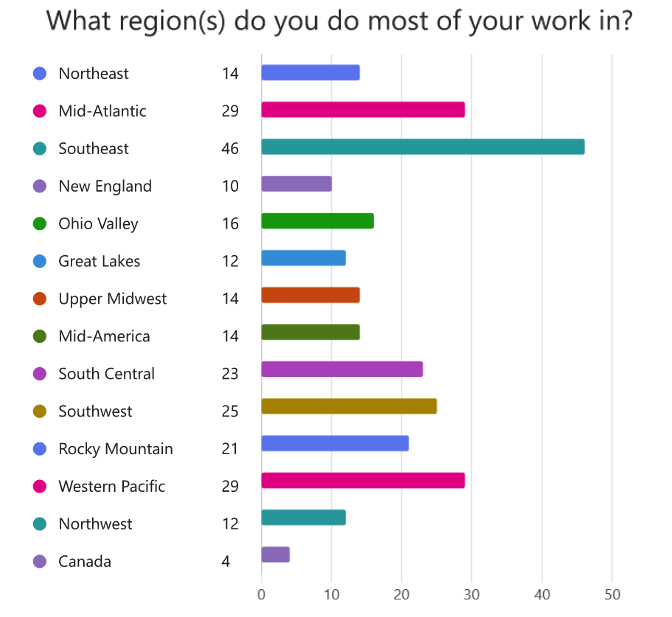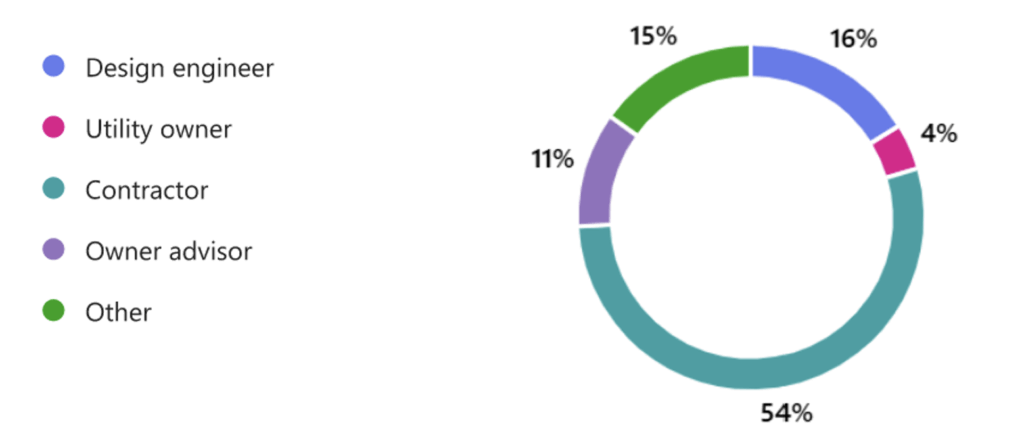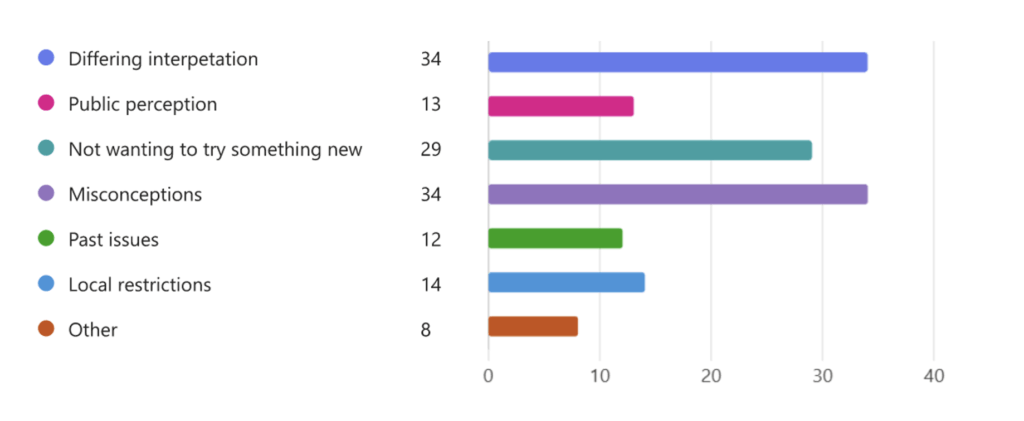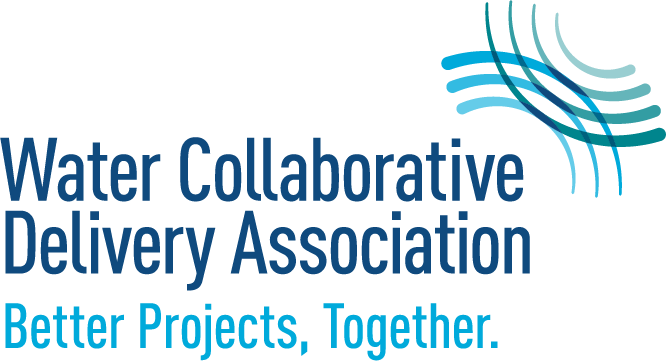In the world of water infrastructure, innovation often meets resistance—sometimes because it’s not allowed, but more often because it’s misunderstood. The April 2025 survey conducted by the Water Collaborative Delivery Association (WCDA) reveals a telling pattern: Many professionals encounter resistance to collaborative delivery methods even in places where they are legally permitted.
This survey captured a broad cross-section of the water sector both geographically and roles within the industry, receiving approximately 100 responses in total. The charts below summarize the regions in which respondents work (respondents could select multiple regions), as well as the primary roles of survey respondents.


(n = 93)
The Misconception of “Not Allowed”
According to the survey, nearly half of respondents (49%) reported encountering resistance based on legality in jurisdictions where collaborative delivery is, in fact, allowed.
The most cited reasons were: misconceptions (34 responses), differing interpretations (34), and a reluctance to try something new (29). Participants were invited to select multiple responses for this question. Although this blog focuses on ambiguity in legislation, it was tied with misconceptions as the most cited reason for encountering resistance. Watch for more on the topic of misconceptions in collaborative delivery in a future WCDA blog article.

This highlights a critical issue: Ambiguity or lack of clarity in legislation is often mistaken for prohibition. But non-specificity is not a stop sign, it’s a signal to seek guidance, not to abandon innovation.
Legislation: A Barrier or a Bridge?
When asked if unclear or ambiguous legislation had been a roadblock, 49 respondents said yes, indicating that uncertainty can stall progress. Yet 47 also said that clear legislation would help them move forward, showing that clarity is empowering.
But here’s the key insight: Even in the face of ambiguity, collaborative delivery is often still legally viable. The challenge lies not in the law itself, but in how it’s interpreted and communicated.
Geographic Differences
Several states were more frequently cited as having experienced challenges due to ambiguity. The most commonly cited states included: Texas, Florida, Virginia, California, and the Carolinas. However, it should be noted that almost all regions were referenced at least once and that it is likely that this survey has a greater representation from the noted states than others.
The Role of WCDA and its Legislative Map
This is where the Water Collaborative Delivery Association plays a pivotal role. WCDA provides a comprehensive legislative map that outlines where and how collaborative delivery methods—like progressive design-build (PDB), construction management at-risk (CMAR), and others—are permitted across the US.
This resource is invaluable for:
- Clarifying legal pathways
- Educating stakeholders
- Empowering decision-makers to move forward confidently
You can explore the WCDA legislative map here to see what’s possible in your state.
WCDA has a number of advocacy initiatives currently underway that can be found here.
Education Over Hesitation
The survey also revealed that lack of familiarity among decision-makers is a major barrier. Many respondents noted that municipalities and smaller owners are not well versed in collaborative delivery models, leading to hesitation or defaulting to traditional methods like hard bids.
This is where education and advocacy become essential. WCDA offers education, research, and guidance documents to help bridge the knowledge gap and demonstrate the value of collaborative delivery. Our education can be tailored to any audience such as regulatory agencies, municipal officials, utility owners, practitioners, and more. If you would like more information, please contact us at education@watercollaborativedelivery.org to learn more about our offerings and how they can be customized to your needs.
Don’t Let Ambiguity Be the End of the Road
If you’re facing resistance based on “unclear” laws, remember: Uncertainty is not illegality. With the right tools, guidance, and mindset, you can navigate the gray areas and unlock the benefits of collaborative delivery.
Let’s not allow ambiguity to stall progress. Instead, let’s use it as a reason to ask better questions, seek expert guidance, and push for clarity—because the future of water infrastructure depends on it.
WCDA is here to help. Please reach out to us at Advocacy@WaterCollaborativeDelivery.org with questions, suggestions, feedback on specific advocacy needs, or for information on how to get involved.
Special thanks to the following for their contributions to this blog: Erik Anderson (WCDA Research Committee Chair | Wharton-Smith) and Scott Phillips, Assoc. DBIA (Advocacy Committee Chair | Garney).

